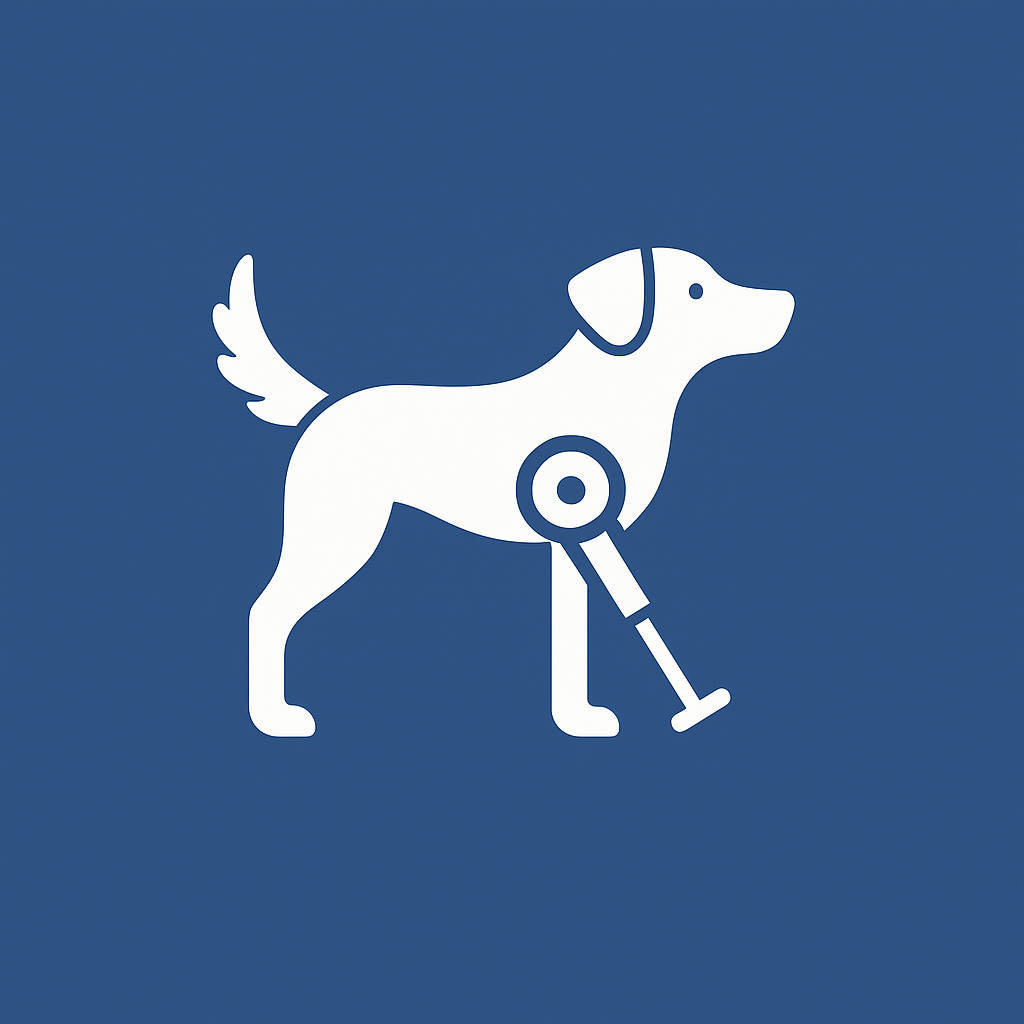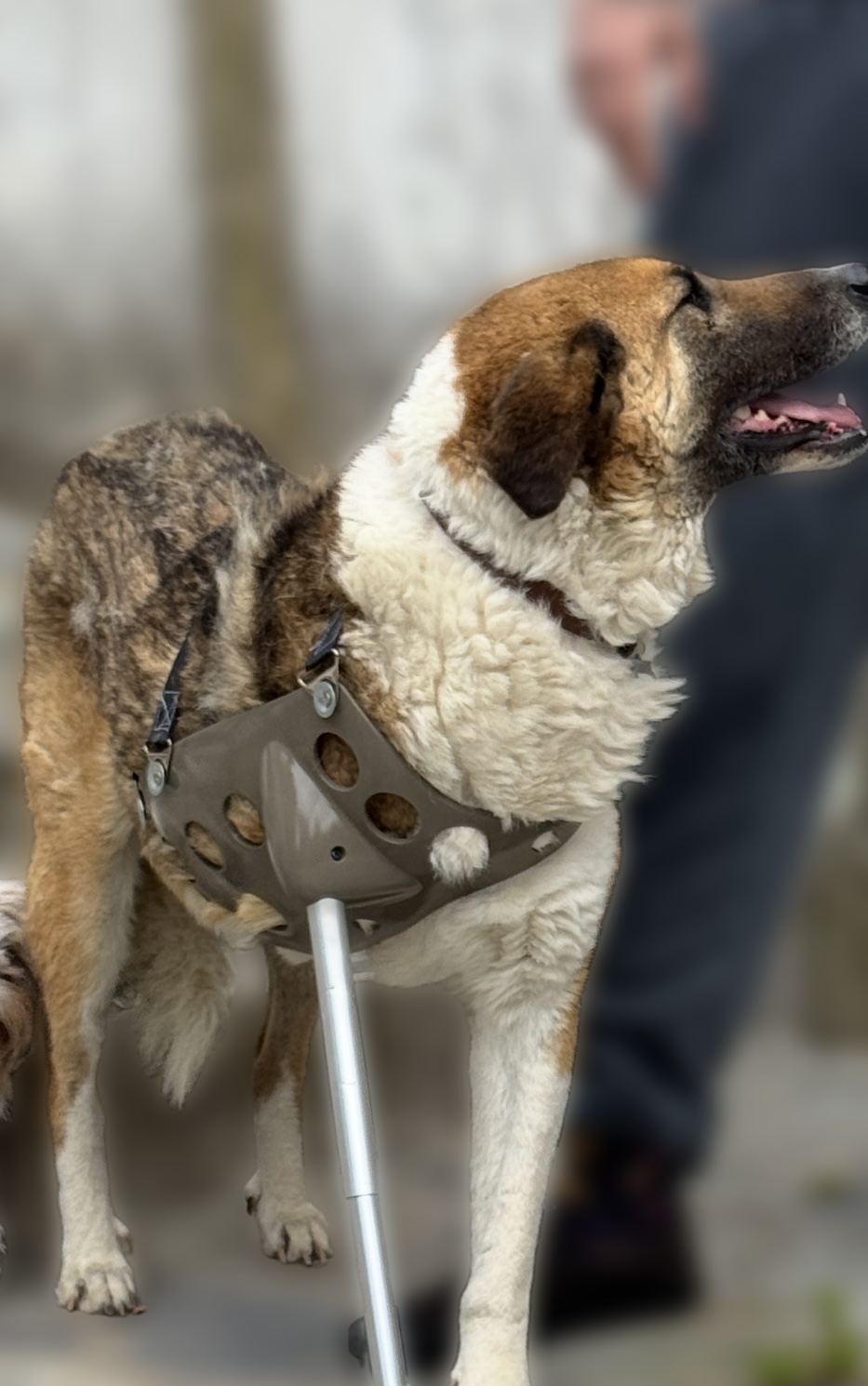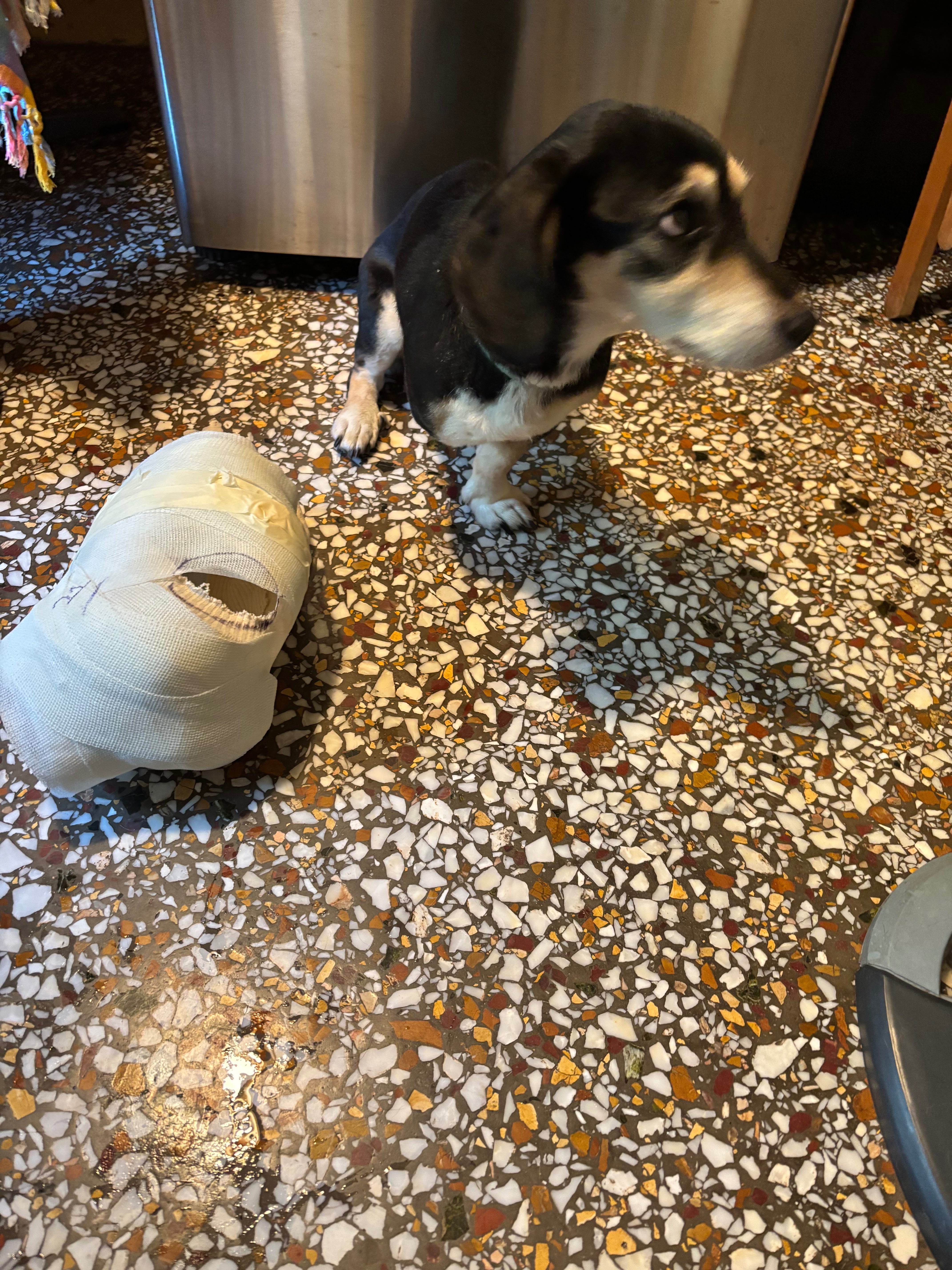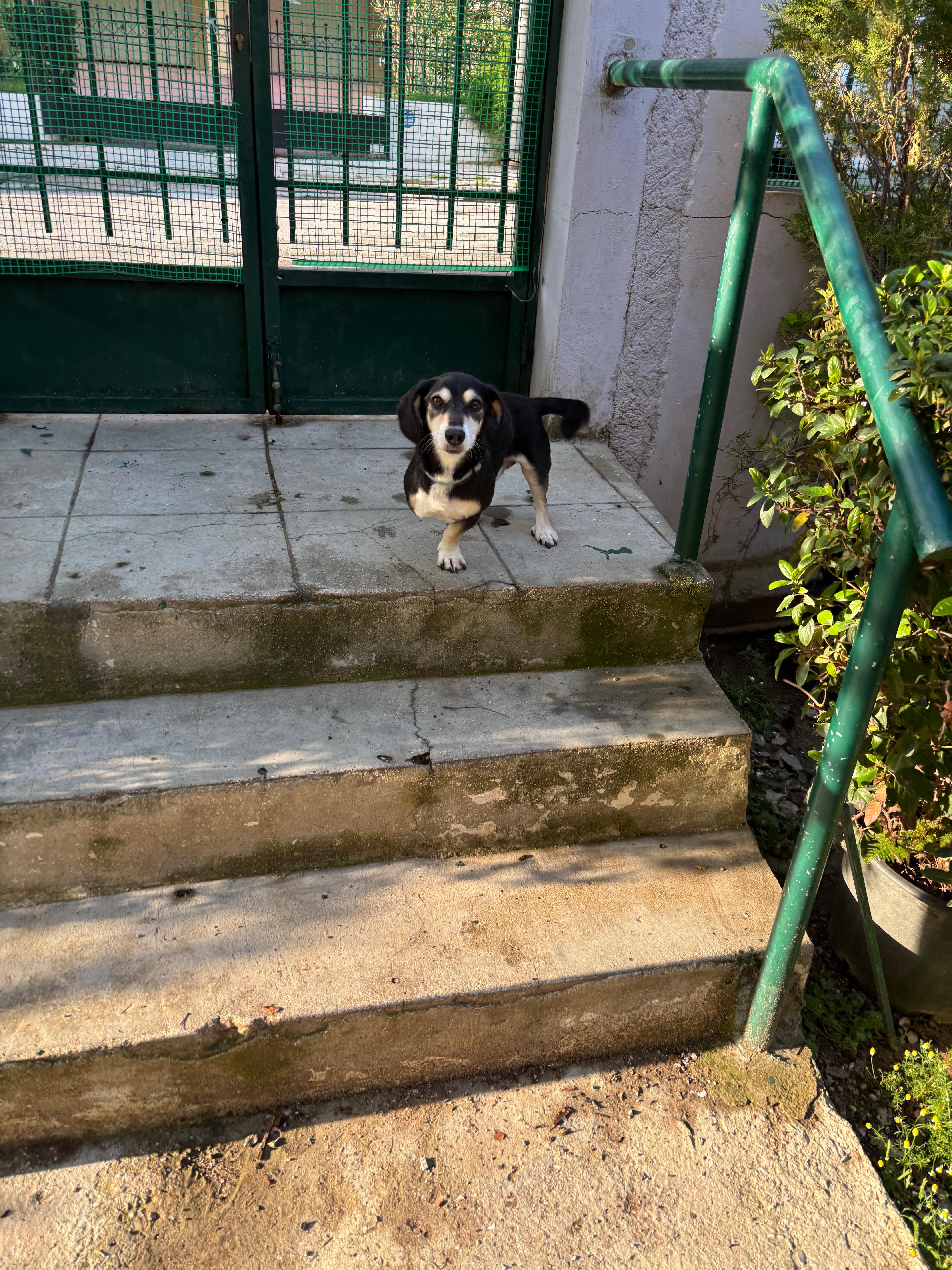
Our Projects
Follow the journey of dogs receiving our custom 3D printed prosthetics
Our Growing Impact
We're proud to be helping dogs like Komis and Snoopy regain their mobility through our custom prosthetics. We're always looking for more dogs that could benefit from our services. If you know of a dog in need of a prosthetic limb, please contact us. We offer our prosthetics commercially to those who can afford them, while providing them at no cost to qualified individuals with financial constraints and animal shelters through our subsidized program.
Our team is ready to assess new cases and provide custom-designed prosthetics that transform lives.
Eligibility Criteria
- Dogs with limb loss or mobility challenges
- Stable health condition
- Owner commitment to follow-up care
- Located in or able to travel to Athens, Greece
Current Project: Komis



Komis' Story
Komis is a six-year-old dog who lost his leg in a hunting accident. After surviving the devastating floods in Volos, he now lives in Mellisia. As our first patient, Komis has been fitted with a custom 3D-printed prosthetic limb, designed specifically for his needs.
His prosthetic was created using our specialized process: first creating a fiberglass tape cast of his limb to capture exact dimensions, then 3D scanning the cast for digital precision, followed by detailed 3D modeling, prototype testing, and finally producing the finished prosthetic. This advanced approach allows for precise customization at a fraction of the cost of traditional prosthetics.
Komis is currently in the adaptation phase, gradually increasing his activity level and confidence with the prosthetic. We're closely monitoring his progress and making adjustments as needed to ensure optimal comfort and functionality.
Project Details:
- Custom 3D-printed prosthetic limb
- Lightweight, durable materials
- Adjustable fit for comfort
- Ongoing support and adjustments


More photos coming soon as Snoopy's prosthetic is developed
Snoopy's Story
Snoopy is a stray dog from Crete who has struggled with mobility issues and painful cramps due to his condition. Despite his needs, he was never able to receive a prosthetic due to the high cost and lack of accessibility to such specialized care.
We're thrilled to announce that Snoopy has just completed the casting phase of his prosthetic journey! This crucial first step allows us to create a precise mold of his limb, ensuring the perfect fit for his custom prosthetic.
Snoopy's prosthetic is being generously sponsored by The Ivy League Roadmap, demonstrating how businesses can make a tangible difference in an animal's life while gaining meaningful brand exposure.
Project Status:
- Initial assessment completed
- Fiberglass casting completed
- 3D scanning in progress
- 3D modeling & prototype creation
- Final fitting & adaptation training
Follow our social media for regular updates on Snoopy's progress as we work to give him the mobility he deserves!
Our Prosthetic Creation Process
We follow a precise, methodical approach to create custom prosthetics that perfectly fit each dog's unique anatomy and needs:
1. Casting
Create a precise fiberglass tape cast of the dog's limb to capture exact anatomical details
2. Scanning
Digitize the cast using advanced 3D scanning technology for maximum precision
3. 3D Modeling
Design a detailed digital model based on the scan with precise measurements and features
4. Prototyping
Create and test functional prototypes to ensure perfect fit, comfort, and mobility
5. Final Product
Produce the finished prosthetic with adjustable features and fit it to the dog
Komis' Journey & Prosthetic Development
1. Meeting Komis & Initial Assessment
Our journey began when we met Komis, a dog who had lost his limb in a hunting accident. After surviving the devastating floods in Volos, he needed help to regain his mobility. We conducted a thorough assessment to determine if he was a good candidate for a prosthetic.


2. Casting, Scanning & 3D Modeling
After careful assessment, we created a fiberglass tape cast of Komis' limb to capture its exact shape and dimensions. We then digitized this cast using 3D scanning technology and developed a precise digital model for his prosthetic. The design features a perforated structure to reduce weight while maintaining strength, with careful attention to pressure distribution and comfort.


3. Prototyping & Testing
Based on our 3D model, we created prototypes to test the design and make necessary adjustments. This critical phase allowed us to refine the prosthetic before creating the final version. We tested different components to ensure they would work together seamlessly.


4. Final Product Creation
After refining our design through multiple prototypes, we created the final prosthetic. The finished product includes adjustable straps for a secure fit while making it easy to put on and remove. Every detail was carefully considered to ensure comfort, durability, and functionality. Each prosthetic costs between 250-300 euros for small animals, 350-400 euros for medium animals, and 450-500 euros for large animals, which is significantly less than traditional prosthetics. Through our subsidized program, we're able to provide these at no cost to qualified individuals with financial constraints.


Benefits of Our Prosthetics
Physical Benefits
- Improved Mobility: Our prosthetics restore natural movement patterns, allowing dogs to run, walk, and play with greater ease.
- Reduced Joint Strain: By restoring proper weight distribution, our prosthetics reduce strain on the remaining limbs, preventing secondary joint issues.
- Muscle Development: Regular use of the prosthetic helps maintain muscle mass and strength in the affected limb.
- Prevents Compensatory Issues: Dogs with limb loss often develop problems in other parts of their body due to compensatory movement. Prosthetics help prevent these secondary issues.
Psychological Benefits
- Increased Confidence: Dogs with prosthetics show remarkable improvements in confidence and willingness to engage in activities.
- Reduced Frustration: Improved mobility leads to less frustration and better overall mental health.
- Enhanced Quality of Life: Dogs with prosthetics can participate more fully in family activities and interactions with other dogs.
- Restored Independence: The ability to move freely without assistance gives dogs back their sense of independence.
Technological Advantages
- Custom-Designed: Each prosthetic is precisely tailored using our fiberglass casting and 3D scanning process, ensuring a perfect anatomical fit for each dog's unique needs.
- Lightweight Materials: Our 3D-printed prosthetics use advanced materials that are both durable and lightweight.
- Adjustable Design: Our prosthetics can be easily modified as the dog grows or as their needs change.
- Cost-Effective: Our process allows us to create prosthetics at 90% less cost than traditional methods.
- Rapid Iteration: We can quickly create and test multiple prototypes to find the optimal solution for each dog.
- Environmentally Friendly: Our production process creates minimal waste compared to traditional manufacturing.
Research & Development
We're constantly working to improve our prosthetic designs through ongoing research and development. Our current focus areas include:
- Advanced Materials: Testing new materials that offer improved durability, flexibility, and comfort
- Attachment Mechanisms: Developing better ways to secure prosthetics comfortably and safely
- Adaptation Protocols: Refining our methods for helping dogs adjust to their new prosthetics
Your donations directly support this research, helping us develop even better solutions for dogs with mobility challenges. Each improvement we make helps more dogs regain their mobility and independence.
Help Us Take On More Projects
Each prosthetic costs 250+ euros to produce, which is 90% less than traditional prosthetics. Your donation enables our subsidized program to provide prosthetics at no cost to shelters and owners facing financial constraints, helping more dogs in need.